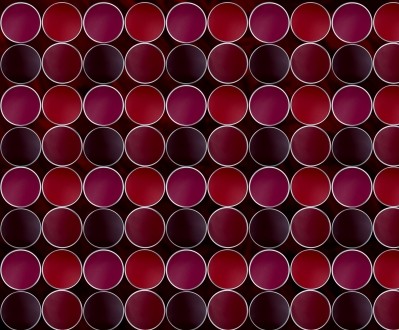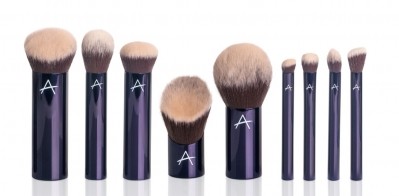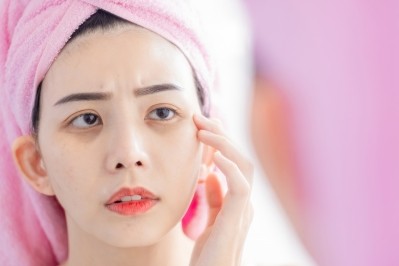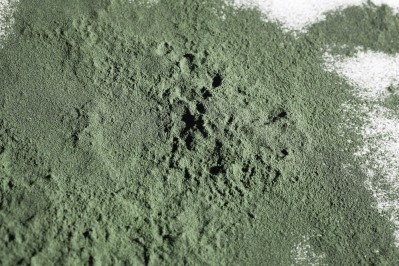DayGlo Color Corp. launches rice protein-based florescent pigments for cosmetics
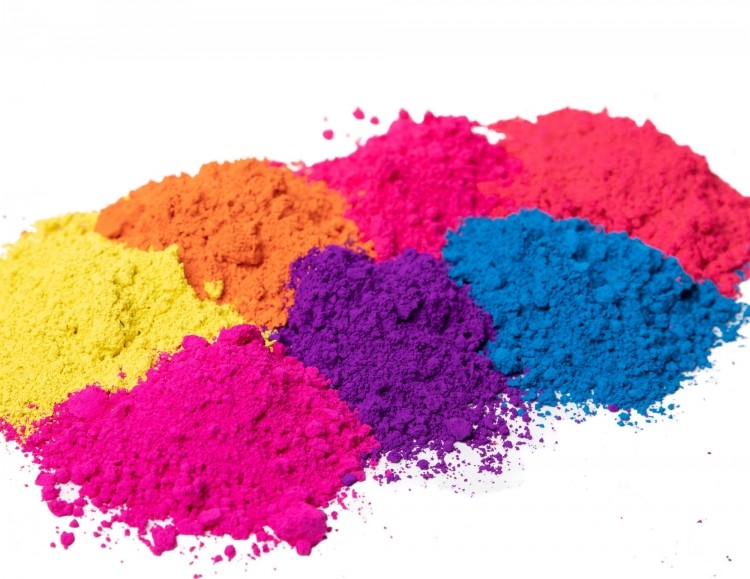
Pigments are an integral ingredient in many types of cosmetic and personal beauty care products, including nail polishes, lipsticks, and eyeshadows. As the consumer demand for sustainable and clean ingredient product options continues to rise, innovation in this area becomes increasingly more essential.
As reported by market research and data analytics firm NIQ, a recent survey revealed that 24% of respondents want cosmetics and personal beauty care product brands to increase their use of ingredients in their products that are produced in a sustainable way, and pigments are no exception. Considering that pigments are used in such a wide variety of cosmetic products including lip glosses, lotions, creams, and soaps, this presents a significant and pressing need for manufacturers and suppliers to these industries.
DayGlo Color Corp., a privately held American paint and pigment manufacturer based out of Cleveland, Ohio and a subsidiary of RPM International Inc., has recently announced their launch of a new class of pigments that meet the demand for an all-natural option as a solution to this issue. As detailed by the company, Elara Luxe is an FDA-compliant, all-natural fluorescent pigment that is non-microplastic and formulated to meet clean beauty standards.
Currently available in a range of seven colors, Elara Luxe is biodegradable, uses approximately 97% non-GMO renewable plant sources, and is vegan, kosher, and halal certified. This innovative powder pigment line offers manufacturers of water and oil-based cosmetic and personal beauty care product options a new opportunity to integrate an all-natural colorant option to their product lines to better meet the growing demand of consumers worldwide.
To learn more about the development and release of Elara Luxe pigments, CosmeticsDesign interviewed Tom DiPietro, President of Research and Development at DayGlo Color Corp, and Will Wooten, Vice President of Global Sales and Marketing for DayGlo. They shared their experience developing the pigment collection, as well as their thoughts on the potential applications and impact the Elara Luxe launch may have on the cosmetics and personal beauty care industries in the coming months.
CDU: Can you share a bit about the background behind the launch of the new Elara Luxe fluorescent pigments?
TD: Several years ago, we began investigating natural plant materials as the basis for a cosmetic colorant, which was a natural response to the growing trend towards clean beauty. Together with my colleague Liming Tang, who is as Senior Research Chemist, we co-developed our Elara Luxe cosmetic colorants.
CDU: Tell us about the development process for the florescent pigments?
TD: Fluorescent pigments are distinct from traditional organic and inorganic pigments in that they do not consist of discrete molecules; instead, they are comprised of a blend of a host polymer and fluorescent dyes. Our team designs the host polymers to optimize both the fluorescent qualities of the dyes and the functional pigment properties they provide.
CDU: Why choose all-natural rice protein as the base ingredient?
TD: When developing our next cosmetic pigment, we were committed to using naturally occurring materials, and of course FDA-approved cosmetic dyes. As it turned out, many cosmetic dyes are anionic in nature.
Anionic dyes are those that can dissociate into negatively charged ions when in an aqueous solution. They are also referred to as acidic dyes, as they contain acidic groups such as sulfate and carboxylic groups.
These dyes can be used to color natural or synthetic polyamide materials like wool, silk, or nylon by forming an ionic bond between the acid group of the dye and the amine group of the polyamide. Given that plant and animal proteins are also polyamides made from amino acids, they too can be dyed using acid dyes.
Initially, we explored the range of proteins available, drawing from materials commonly utilized in the food industry. While we briefly experimented with soy flour and soy protein isolates, we ultimately abandoned this line of research due to the prevalence of soy allergies within the general population. We chose rice protein as our preferred option, as it is widely recognized for its hypoallergenic properties.
WW: As the leading global manufacturer and innovator in the fluorescent color space we see it incumbent on ourselves to develop materials that are sustainable. After reviewing multiple options, we found that rice protein provided the best color development while providing benign allergic properties.
CDU: How does the new product adhere to the ‘Clean Beauty’ standard?
TD: Clean beauty is often defined as products that are free of harmful or disputed ingredients, but the definition remains imprecise. Our previous cosmetic products, which are intrinsically safe, utilize engineered polymers made from petrochemicals.
These engineered materials are designed by selectively choosing starting monomers and polymerizing them into a final product that is optimized for performance. This provides scientists with substantial leeway to create innovative and distinctive materials, but it also means that petrochemically derived substances are used, and the final INCI name used for cosmetic labeling is frequently unappealing to consumers.
The procedure for modifying natural materials is markedly different. In the case of producing functional pigment from rice protein, we begin with the resources provided by nature and eliminate unnecessary components. This is achieved by washing the plant protein with a plant-based detergent and simple salt.
The washed protein is then whitened using hydrogen peroxide and colored using traditional cosmetic dyes. The final stage in this process involves drying the powders and milling them to the desired particle size. The ultimate outcome is a cosmetic pigment that originates from natural sources and is more than 96% plant-based. Its INCI name accurately indicates its natural origins.
Elara Luxe boasts another notable attribute - its sustainability profile. As plastic items continue to face growing environmental scrutiny, a specific type, called microplastics, are gaining attention.
These are polymer particles that are smaller than 5mm. Microplastics have been detected in water bodies worldwide, even in the most remote areas. Although the effects of these materials on health and the environment are uncertain, there are concerted efforts to reduce their use.
Our synthetic products fall under the category of microplastics, according to the broad definition of this term. However, Elara Luxe is different because it is made from a natural plant protein and is inherently biodegradable. This has been verified through controlled laboratory testing. With biodegradable products like Elara Luxe, there is no accumulation of waste in the environment.
CDU: What is the potential impact of the new product’s release on the cosmetics industry?
WW: Elara Luxe is the ideal choice for clean beauty products due to its composition. These new pigments bridge the gap between natural colorants that are difficult to use and full synthetics.
Elara Luxe pigments offer the same level of ease of dispersion, stability, and compatibility as previous generations of DayGlo cosmetic pigments. They can be incorporated into water, oil, and emulsion-based formulas for consistent results.
Cosmetic formulators face challenges in creating new shades due to the limited selection of natural and synthetic FDA-approved colorants. However, the introduction of Elara Luxe allows them to explore a new set of seven pigments that are clean and fresh. These range from vibrant neon hues to warm autumn tones and cool winter shades, opening a world of never-before-seen colors.
Elara Luxe brings a new way to formulate cosmetics and personnel care products. With our simple “stir in” attributes formulators can make a wide pallet of colors, even reaching skin tones. This can be done without grinding, better pH stability, and is the only legal fluorescent pigment for cosmetic applications.
CDU: What are some of the applications of the new florescent pigments?
TD: We are confident that Elara Luxe pigments will have a wide range of applications in various cosmetic and personal care products, including soaps, shampoos, facial makeup, lip products, temporary hair colors, and nail enamels.
WW: The application consideration for most companies now widens greatly with Elara Luxe’s all-natural composition. We are seeing interest across many product verticals within personnel care and cosmetics.
CDU: Are there any plans for future products based on this innovative product development?
TD: The usage of Elara Luxe is subject to the colorant usage restrictions set by the FDA. Currently, our product line includes only one shade that can be safely used in eye makeup. However, we are exploring the possibility of introducing additional shades that can be used in eye makeup.
CDU: Are the pigments more cost effective for manufacturers and suppliers for the cosmetics and personal care industry?
WW: The value that Elara Luxe brings to the market is significant. This system allows the formulator a new all-natural pigment to develop new products that can be much brighter than conventional pigments. This added to the 36 D&C colors adds 25% more color space to formulate within! Finally, the pigment saves time with no pre-grinding as seen in other conventional systems.
